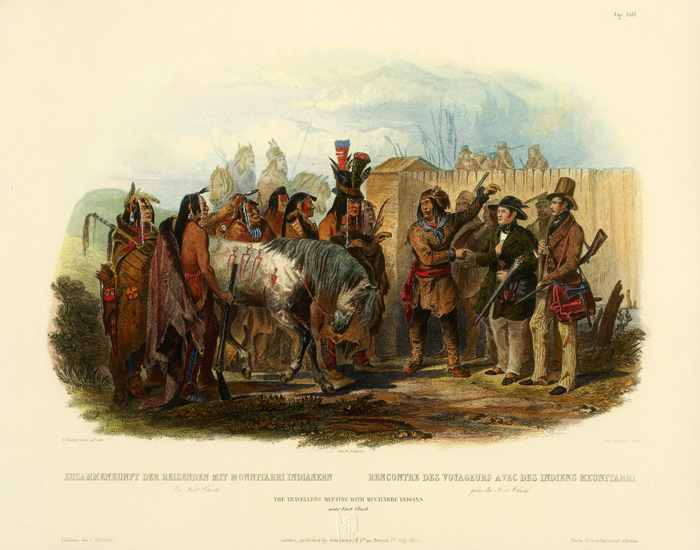Finally found the larger image Spence posted...should have looked at all posts first. The smaller pic makes it appear there could be a knife sheath immediately above but the clearer larger image shows it's the end of the woven shoulder strap that creates that illusion. A number of of hanging bayonet/cutting blade shoulder and belt rigs as worn by soldiers was also in use with the simple expedient of replacing the short sword with a tomahawk. Though a replica, this type of bayonet or hanger suspension belt is an example...just ignore the added knife sheath.
https://i.pinimg.com/236x/8a/eb/ee/8aebee241cfdac54a58693ae6821917f--holsters-knife-making.jpg
Not exactly the same, of course, but the single sword units are somewhat alike.
There's this one but for a much larger type axe than a simple tomahawk. Listed as mid-18th century but no idea of it's provenance.
http://2.bp.blogspot.com/-w-bQX5fw...EpQ/9HXgfHoebak/s640/fortpittmuseumca1760.jpg
https://i.pinimg.com/236x/8a/eb/ee/8aebee241cfdac54a58693ae6821917f--holsters-knife-making.jpg
Not exactly the same, of course, but the single sword units are somewhat alike.
There's this one but for a much larger type axe than a simple tomahawk. Listed as mid-18th century but no idea of it's provenance.
http://2.bp.blogspot.com/-w-bQX5fw...EpQ/9HXgfHoebak/s640/fortpittmuseumca1760.jpg
Last edited by a moderator:








